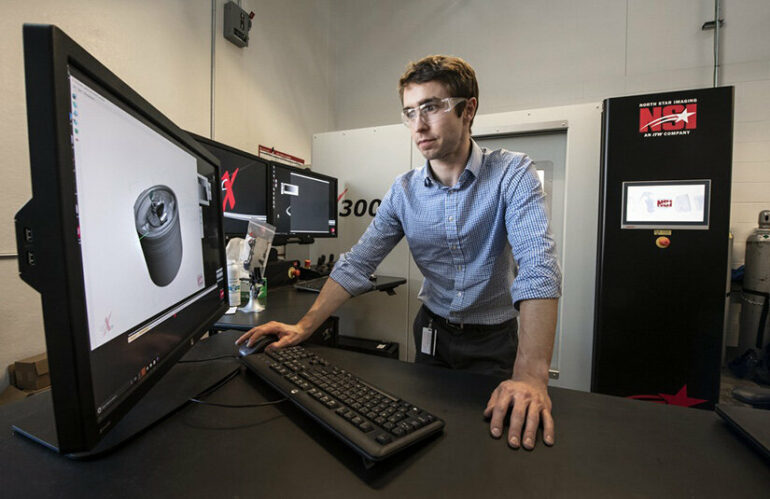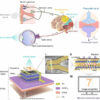A popular adage in data analysis is that you can only control what you can measure. For researchers at the National Renewable Energy Laboratory (NREL), precise and accurate measurement is crucial to understand and optimize lithium-ion (Li-ion) batteries.
Li-ion batteries are everywhere, from personal devices to electric vehicles and stationary storage systems that support the transition to renewable energy generation by mitigating negative grid impacts. To meet evolving energy needs, researchers are focused on improving the performance, safety, and energy density of Li-ion batteries.
A recent breakthrough by NREL and the University of Ulm advances the way researchers measure and analyze battery materials. The research, published in npj Computational Materials, artificially generated the representative architecture of a Li-ion electrode particle with sub-particle grain detail. This first-of-its-kind artificial electrode will allow researchers to manipulate the model to evaluate opportunities for battery design improvements.
“This breakthrough allows NREL to perform single-particle characterization for Li-ion cells,” said Donal Finegan, an NREL energy storage researcher and staff scientist leading the project. “We know that the morphology and orientation of grains within the cell can greatly affect the rate performance and life of the electrode. With this model, we can evaluate the physical conditions that lead to improved batteries.”
Understanding the invisible
One of the greatest challenges in Li-ion research is the microscopic scale of the work; small details often result in big impacts to battery performance. No existing technique allows researchers to measure sub-particle information that is integral to understanding Li-ion battery behavior. For years, researchers at NREL have pushed the boundaries of specialized imaging capabilities to improve understanding of Li-ion electrode-level structures, but these tools have so far been unable to offer a complete picture of sub-particle detail.
“Microscopy techniques always require a trade-off,” Finegan said. “For example, tools that measure particle morphology overlook vital information about the chemical properties or crystal structure due to systematic limitations. We’ve realized there is no way to get all of the information we need in one place.”
To address this gap in understanding, a multiscale, multimodal imaging approach was used to generate the artificial Li-ion electrode model, ultimately merging two of NREL’s existing advanced capabilities. Researchers used X-ray nano-computed tomography to capture the morphology of the particle’s outer shape. For the internal grain distribution, researchers used focused-ion beam electron backscatter diffraction (FIB-EBSD) to capture high-resolution sub-particle information.
The language of microscopy
This project is not the first time NREL has combined microscopy techniques to get a closer look at battery behaviors. NREL’s energy storage researchers often leverage state-of-the-art X-ray diagnostic capabilities to examine the composition of battery materials. However, where previous research focused on imaging results, this project used complicated characterization to merge data streams.
“Merging data streams is not a trivial task,” Finegan said. “Microscopy itself is highly specialized, and these tools each output data in their own way. To generate this model, our team was tasked with not only characterizing the information from each data source, but then translating it to an entirely new format.”
Early analysis with the artificial model has already provided researchers with greater understanding of the physical conditions that affect how lithium travels through the electrode and around the crystals. The sub-particle details from this model help analyze an ion’s journey and will inform research aimed at developing batteries that can withstand extreme fast charging conditions without accelerated degradation.
Still, this is just the beginning for NREL’s artificial model. Future research will apply machine learning techniques to acquire and translate data faster, leading to higher-quality models and even greater insights to build better batteries in the future.
More information:
Orkun Furat et al, Artificial generation of representative single Li-ion electrode particle architectures from microscopy data, npj Computational Materials (2021). DOI: 10.1038/s41524-021-00567-9
Provided by
National Renewable Energy Laboratory
Citation:
New technique advances the way researchers measure and analyze battery materials (2021, December 16)



